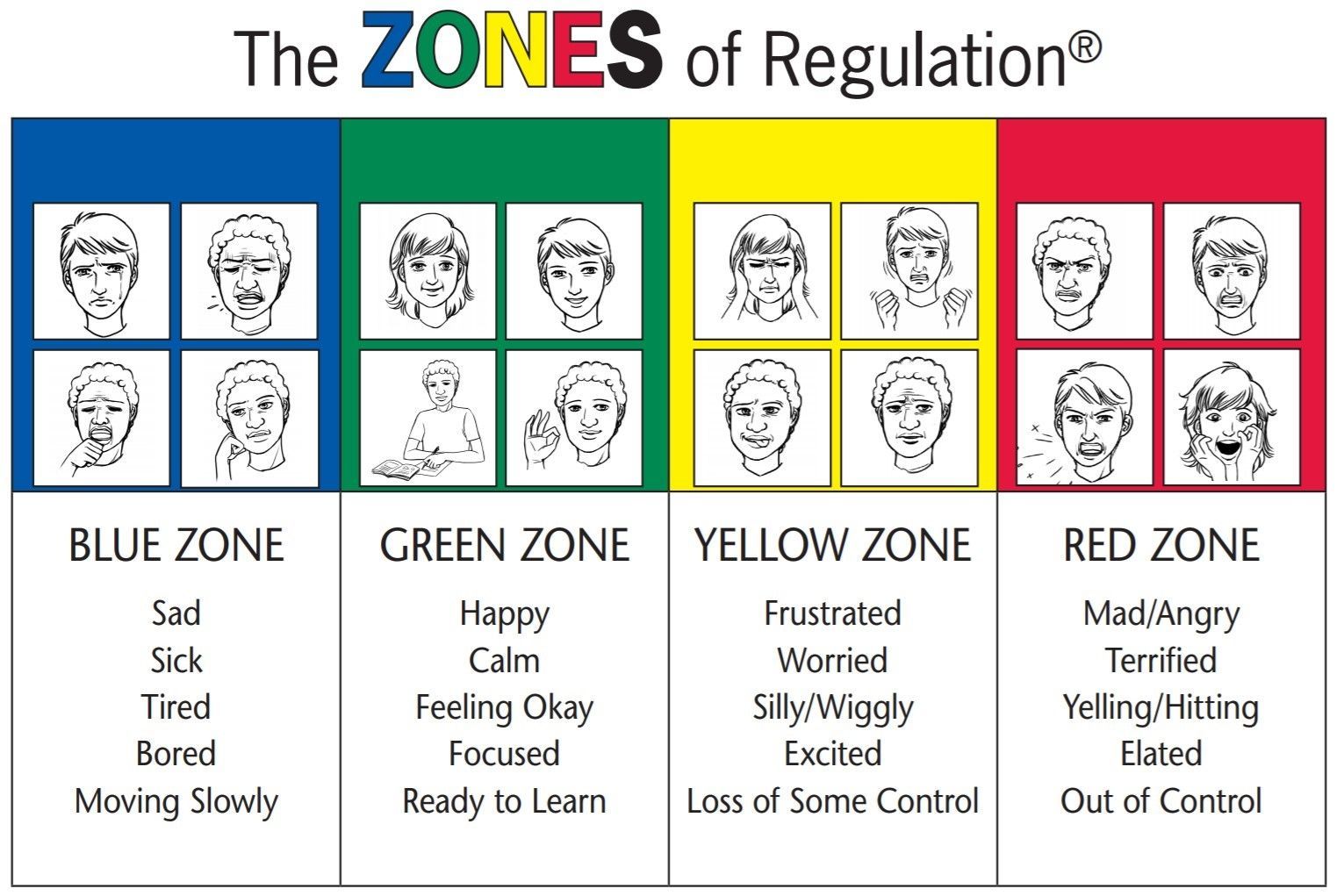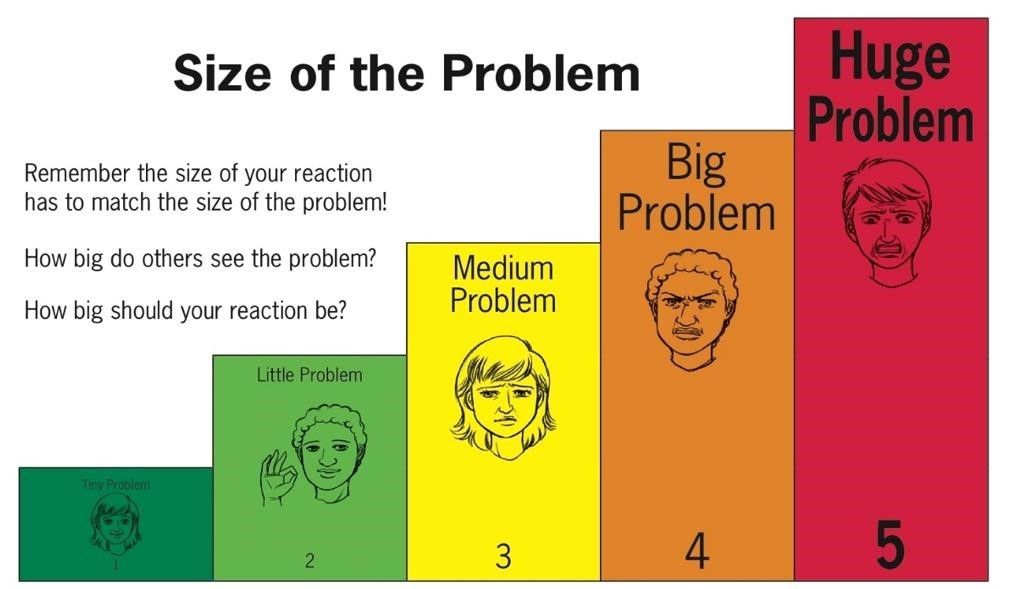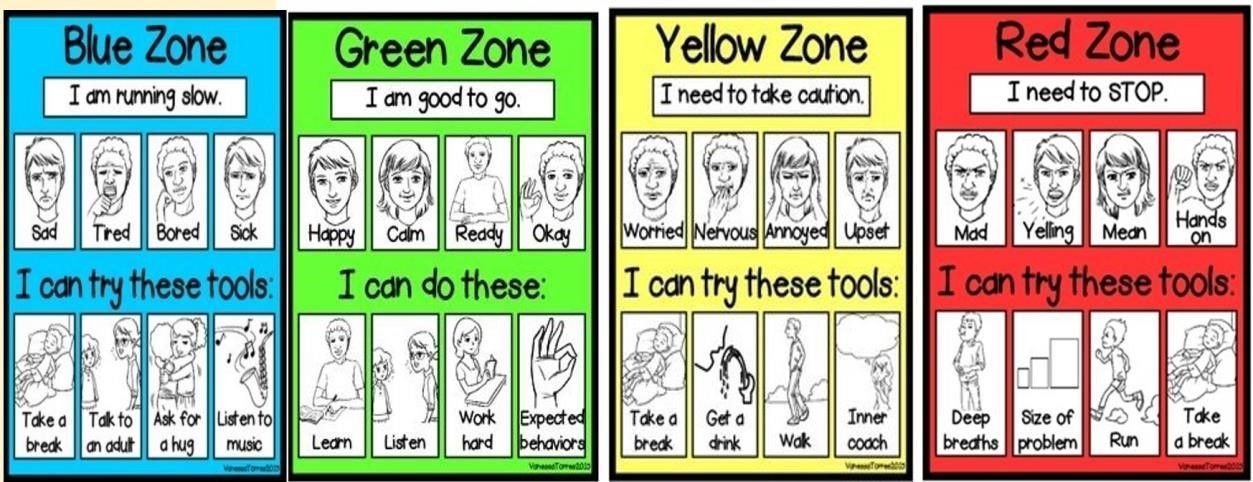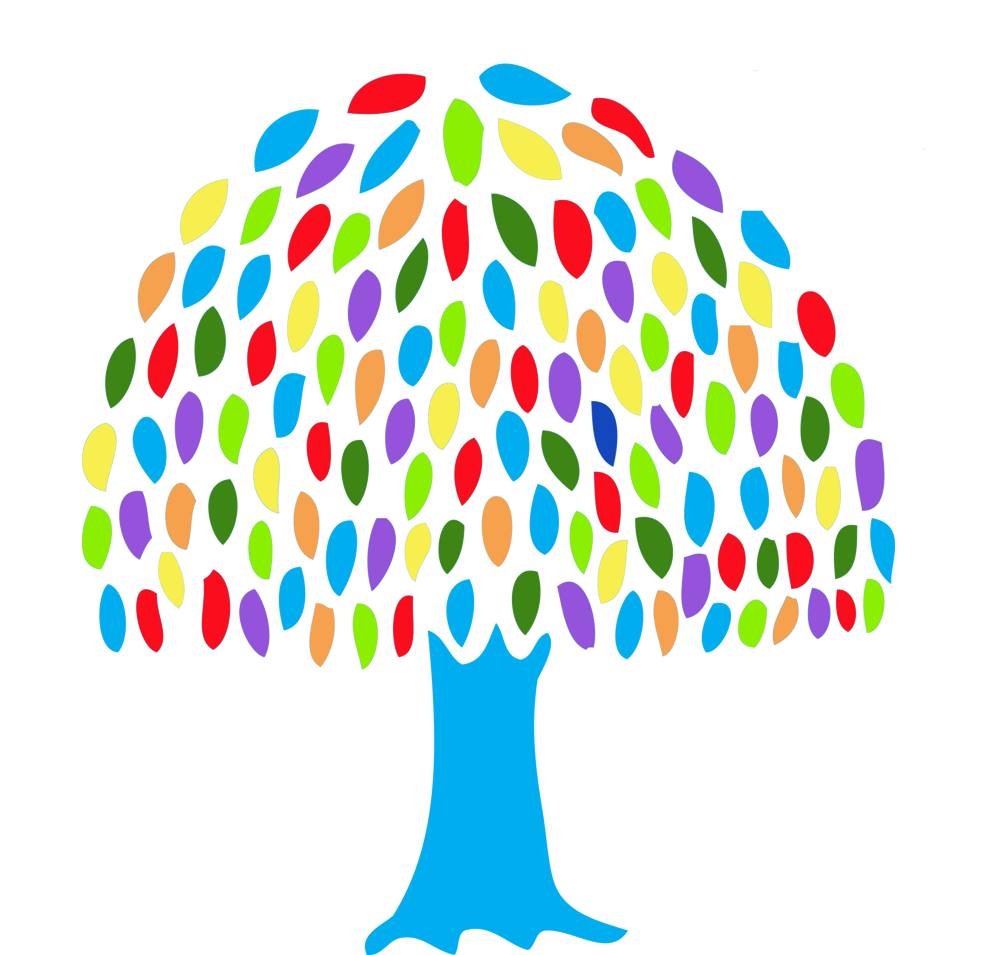
Zones Of Regulation
Zones Of Regulation
The Zones of Regulation is a new programme
we our developing at Whitnash
to compliment the schools already
successful Thrive provision.
The aim is to help children notice and label
the emotion/feeling they are experiencing
at any time they might be emotionally
dysregulated or unsettled.
The programme also helps children
regulate themselves when they are
feeling uncomfortable.
How it Works
The programme starts by helping children
to identify which zone
an emotion or feeling is in.
The Zones of Regulation is a new programme we our developing at Whitnash
to compliment the schools already successful Thrive provision.
The aim is to help children notice and label the emotion/feeling they are experiencing
at any time they might be emotionally dysregulated or unsettled.
The programme also helps children regulate themselves
when they are feeling uncomfortable.
How it Works
The programme starts by helping children to identify which zone an emotion or feeling is in.
The Zones of Regulation is a new programme we our developing at Whitnash to compliment the schools already successful Thrive provision. The aim is to help children notice and label the emotion/feeling they are experiencing at any time they might be emotionally dysregulated or unsettled. The programme also helps children regulate themselves when they are feeling uncomfortable.
How it Works
The programme starts by helping children to identify which zone an emotion or feeling is in.


The children explore these zones and learn to identify which zone they are in.
This is supported by staff who use the language of the zones when appropriate.
There are displays in every classroom to remind and support this process.
Sometimes children can’t or don’t want to name the emotion
but they can identify which zone they are in.
The colour/emotion association aims to reduce children’s stress levels,
whilst enabling their communication when their thinking process
is interrupted and disrupted by over-whelming emotions.
Children also learn that their feelings and emotions can lead to expected and unexpected
behaviours and that those behaviours can have an impact on the children and adults around them
e.g., if you are in the red zone and shouting very loudly at your friend,
it is unlikely that your friend will be in the green zone.
Once children understand the concept of the zones they will explore ways to help regulate
themselves with the support of different strategies.
We want to help all children recognise
when they are beginning to feel uncomfortable in the yellow zone
and have a toolbox of ideas to help them regulate themselves.
In addition to addressing self-regulation, the students will gain an increased vocabulary
of emotional terms, skills in reading other people’s facial expressions,
perspective about how others see and react to their behaviour,
insight into events that trigger their behaviour,
calming and alerting strategies, and problem-solving skills.
We also may scale the problem with the children.

The children explore these zones and learn
to identify which zone they are in.
This is supported by staff who use the
language of the zones when appropriate.
There are displays in every classroom
to remind and support this process.
Sometimes children can’t or don’t want
to name the emotion but they can identify
which zone they are in.
The colour/emotion association
aims to reduce children’s stress levels,
whilst enabling their communication
when their thinking process
is interrupted and disrupted
by over-whelming emotions.
Children also learn that their feelings
and emotions can lead to expected
and unexpected behaviours and that those
behaviours can have an impact on the
children and adults around them
e.g., if you are in the red zone
and shouting very loudly at your friend,
it is unlikely that your friend
will be in the green zone.
Once children understand the concept
of the zones they will explore ways
to help regulate themselves
with the support of different strategies.
We want to help all children recognise when
they are beginning to feel uncomfortable in
the yellow zone and have a toolbox of ideas
to help them regulate themselves.
In addition to addressing self-regulation,
the students will gain an increased
vocabulary of emotional terms,
skills in reading other people’s facial
expressions, perspective about how others
see and react to their behaviour, insight into
events that trigger their behaviour,
calming and alerting strategies,
and problem-solving skills.
We also may scale the problem
with the children.

The children explore these zones and learn to identify which zone they are in. This is supported by staff who use the language of the zones when appropriate. There are displays in every classroom to remind and support this process. Sometimes children can’t or don’t want to name the emotion but they can identify which zone they are in. The colour/emotion association aims to reduce
children’s stress levels, whilst enabling their communication when their thinking process
is interrupted and disrupted by over-whelming emotions.
Children also learn that their feelings and emotions can lead to expected and unexpected behaviours and that those behaviours can have an impact on the children and adults around them e.g., if you are in the red zone and shouting very loudly at your friend,
it is unlikely that your friend will be in the green zone.
Once children understand the concept of the zones they will explore ways to help regulate themselves with the support
of different strategies. We want to help all children recognise when they are beginning to feel uncomfortable in the yellow zone
and have a toolbox of ideas to help them regulate themselves.
In addition to addressing self-regulation, the students will gain an increased vocabulary of emotional terms, skills in reading other people’s facial expressions, perspective about how others see and react to their behaviour, insight into events that
trigger their behaviour, calming and alerting strategies, and problem-solving skills.
We also may scale the problem with the children.

At Home
You can support your child/children at home
by asking them which zone they are in
or identifying which zone they are in,
e.g. “I wonder if you are in the yellow zone
at the moment, you seem a bit worried.”
Naming the emotion can help them
with their emotional literacy and show them
that you can see
they are feeling uncomfortable.
Exploring sensory ideas to help your child
feel calmer will also really help.
Some children find colouring, play dough,
using stress balls, time at the park
or reading really beneficial.
You could also try using relaxing music,
children’s yoga for deep breathing exercises
or mindfulness.
These strategies are promoted through our
Personal, Social and Health Education (PSHE)
and Thrive Approach curriculums in school.
At Home
You can support your child/children at home by asking them
which zone they are in or identifying which zone they are in,
e.g. “I wonder if you are in the yellow zone at the moment, you seem a bit worried.”
Naming the emotion can help them with their emotional literacy
and show them that you can see they are feeling uncomfortable.
Exploring sensory ideas to help your child feel calmer will also really help.
Some children find colouring, play dough, using stress balls, time at the park
or reading really beneficial. You could also try using relaxing music, children’s yoga
for deep breathing exercises or mindfulness. These strategies are promoted through our
Personal, Social and Health Education (PSHE) and Thrive Approach curriculums in school.
At Home
You can support your child/children at home by asking them which zone they are in or identifying which zone they are in,
e.g. “I wonder if you are in the yellow zone at the moment, you seem a bit worried.”
Naming the emotion can help them with their emotional literacy and show them that you can see they are feeling uncomfortable. Exploring sensory ideas to help your child feel calmer will also really help. Some children find colouring, play dough, using stress balls, time at the park or reading really beneficial. You could also try using relaxing music, children’s yoga for deep breathing exercises
or mindfulness. These strategies are promoted through our Personal, Social and Health Education (PSHE)
and Thrive Approach curriculums in school.

The key message is to help your child
understand that it is ok to feel angry,
be worried or scared but they do need to find
ways to help themselves manage those
uncomfortable feelings and self-sooth.
This may also help them with their
self-esteem and resilience.
The key message is to help your child understand that it is ok to feel angry, be worried or scared
but they do need to find ways to help themselves manage those uncomfortable feelings
and self-sooth. This may also help them with their self-esteem and resilience.
The key message is to help your child understand that it is ok to feel angry, be worried or scared but they do need to find ways to help themselves manage those uncomfortable feelings and self-sooth. This may also help them with their self-esteem and resilience.

Click blue buttons for more information.
Page last updated 291223
All Rights Reserved | Whitnash Primary School
